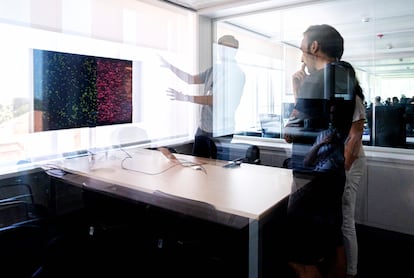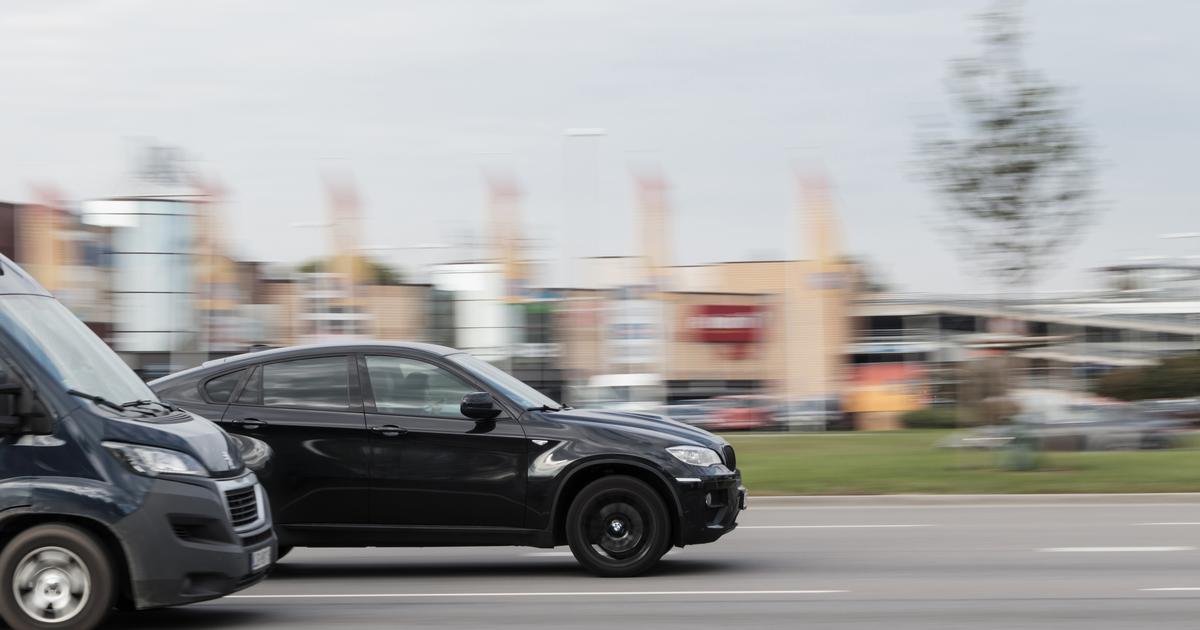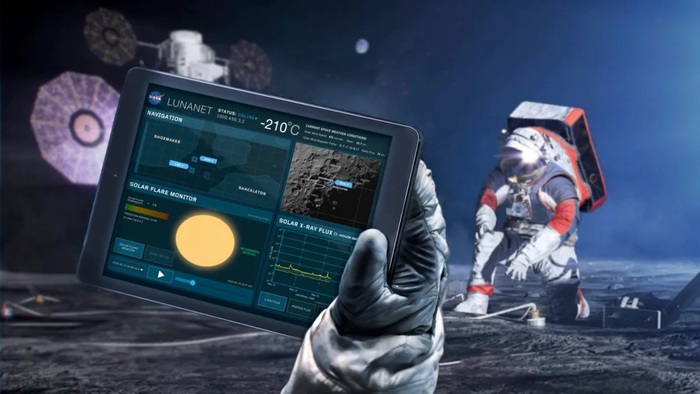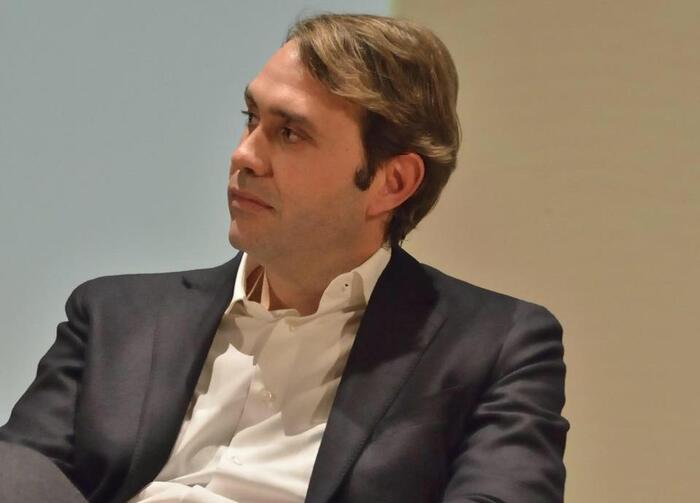“Roger de Llúria street number such, please”.
The taxi driver, of Pakistani origin, tells his phone the address and the phone sends him to a street in the United States.
He repeats the address.
He sends it to Asia.
The client, of Galician origin, tries and the device directs them to Roger de Llúria such number.
The next day the anecdote serves as an example of one of the challenges that an artificial intelligence system designed for people to talk to machines must face: "It has to be robust enough to understand the non-native speaker," says Marta Villegas, in a room of the Barcelona Supercomputing Center (BSC) – National Supercomputing Center.
He is co-leader of the Text Mining Unit, which is dedicated to language technology.
Last year they launched the MarIA project, the first massive open access artificial intelligence model of the Spanish language, fed with a database —provided by the National Library— with 135,000 million words.
"Our mission is to obtain enough data and train models that serve as the base infrastructure for the industry to create applications,"
Explain.
MarIA is available to scientists and companies that want language services in Spanish and reduce the resource gap with respect to English.
“Right now you can tell a phone: 'I want a table for five by the window;
and one is vegan 'in English, but not in Spanish,' he illustrates.
For a company to one day consider making an application that allows giving this order in Spanish, there needs to be a place like the BSC, a public consortium created between the Government of Spain, the Generalitat and the Universitat Politècnica de Catalunya, with researchers from elite and a supercomputer called MareNostrum 4. To create and train MarIA, a calculation power of 9.7 trillion operations per second has been required.
MareNostrum 4 has a maximum power of 13,900 billion operations per second.
But scientific-technical development demands more and more computing capacity and in 2023 the BSC will debut MareNostrum 5, which will reach 314,000 billion operations per second.
Another giant leap from the leading center of supercomputing in Spain, consolidated as an international reference in the revolutionary field where the analysis of large amounts of data (big data) and artificial intelligence merge.
"This is not like a mushroom that has come out overnight," says Mateo Valero, director of the BSC since its inception, opened in 2005 on the foundations of the European Center for Parallelism in Barcelona, which this engineer also founded in 1991 in Telecommunications, winner of the most select prizes in computational engineering, facilitator in 1995 of the pioneering confrontation between the IBM Deep Blue computer and the chess player Miguel Illescas, fan of rancheras and dedicated fan of Barcelona Football Club.
Infrastructure for MareNostrum 5. Vicens Gimenez (© Vicens Gimenez)
From his office in the new corporate headquarters of the BSC, a neat and modern building located at the foot of the Collserola mountain range, Valero sees the Camp Nou and jokes: "If I were the president, I would put a supercomputer there".
It seems that even his Blaugrana passion is outweighed by his devotion to computers: “I've seen these crazy gadgets evolve.
They have changed humanity.”
If the scientific-technological paradigm is the creed of our time, an amusing representation of it is the location of MareNostrum 4, which occupies a deconsecrated chapel: there is that beautiful infrastructure inside a glass box;
that great computer matrix between arches, columns and stained glass windows of the adoration of the Magi and the crucifixion.
The chapel is connected by a walkway to the new BSC building, where the 900-square-meter room is located that is being refurbished to receive MareNostrum 5. Engineer Miguel Armenta shows the place, where they have installed the cooling machines and the electrical panels, in the absence of the
racks
(computer cabinets) that will fill the space.
The purchase of this machine is worth 151 million euros, financed with funds from the European Commission (half), the Spanish Government, the Generalitat and the Politècnica.
For the rest, even though MareNostrum 5 does not yet exist, Valero says that they are already thinking about the sixth, for which they aspire to use microprocessors designed in Europe for the first time, at the BSC.
In the midst of the crisis due to the scarcity of these components, an agreement was announced in May between Intel and the BSC for this center to house a microchip design laboratory, with an investment between the Spanish Government and the American company of 400 million euros in 10 years.
“Europe needs to be autonomous and have access to technology to put its ideas into practice.
If you depend on other countries, you are vulnerable."
The BSC drives with high beams.
He also has his sights set on quantum computing.
William Daniel Phillips, Nobel laureate in Physics, has said that it will represent a technological leap comparable to that between the primary abacus and current computing.
Last year he launched the Quantum Spain project in the Barcelona center, financed by the Secretary of State for Digitization and Artificial Intelligence and coordinated by Dr. Alba Cervera.
In a breath before a meeting, he explains: "If we want to understand nature on a microscopic scale - atoms, molecules, light - supercomputing falls short and we would need to resort to a quantum computer."
The first computer of this type in Spain and in southern Europe will be installed at the BSC, and the aim is to serve as a training tool for potential users of this technology and for the creation of quantum algorithms applicable to public and business needs.
Valero underlines the pedagogical intention of the project.
The practical side, he warns, is more uncertain: “Quantum computing is still in its polar winter.
At the moment the key is in the supercomputers.
Without them we are nothing".
BSC researchers discuss the visualization of an artificial intelligence program.
Vicens Gimenez (© Vicens Gimenez)
These computers are the axis on which the research corpus of the more than 600 BSC scientists revolves, divided between the areas of Computer Science, Life Sciences, Earth Sciences and Computational Applications in Science and Engineering.
In 2021, the center executed a budget of 47.2 million euros and managed more than 250 projects with a wide multidisciplinary range, from biomedicine to urban planning, including climate prediction and ethics in artificial intelligence, among others.
Dressed in a T-shirt from a Hayao Miyazaki movie, the Kurosawa of the anime, computer scientist Darío García, co-leader of the High-Performance Artificial Intelligence Team, talks about the challenge of giving this technology “a reliable meaning”.
The race for the artificial intelligence market is dizzying and is led by large companies in the United States and China whose procedures are opaque.
This lack of transparency is a serious problem because artificial intelligence systems can cause damage to the society to which they are supposed to try to provide solutions and well-being.
Both the structural biases that the data with which the models are trained and the prejudices or interests of those who design them may contain undermine their neutrality and may open the door to the reproduction of racial discrimination,
financial, health… The European Union has embraced the defense of quality standards and law in artificial intelligence as a modern mission linked to its old values, and García's team is working in that direction.
“The US way is for companies to do whatever they want as long as it's profitable;
that of China, in obtaining the greatest amount of data and control for the State;
and ours, in doing science at the same level but guaranteeing democratic principles.
This means that you participate in a race in which you are on a bike and the others are on a motorcycle,” he says.
And does riding a bike frustrate you?
"No, because in this case I would be afraid to ride a motorcycle."
healthcare… The European Union has embraced the defense of quality standards and law in artificial intelligence as a modern mission linked to its old values, and García's team is working in that direction.
“The US way is for companies to do whatever they want as long as it's profitable;
that of China, in obtaining the greatest amount of data and control for the State;
and ours, in doing science at the same level but guaranteeing democratic principles.
This means that you participate in a race in which you are on a bike and the others are on a motorcycle,” he says.
And does riding a bike frustrate you?
"No, because in this case I would be afraid to ride a motorcycle."
healthcare… The European Union has embraced the defense of quality standards and law in artificial intelligence as a modern mission linked to its old values, and García's team is working in that direction.
“The US way is for companies to do whatever they want as long as it's profitable;
that of China, in obtaining the greatest amount of data and control for the State;
and ours, in doing science at the same level but guaranteeing democratic principles.
This means that you participate in a race in which you are on a bike and the others are on a motorcycle,” he says.
And does riding a bike frustrate you?
"No, because in this case I would be afraid to ride a motorcycle."
in obtaining the greatest amount of data and control for the State;
and ours, in doing science at the same level but guaranteeing democratic principles.
This means that you participate in a race in which you are on a bike and the others are on a motorcycle,” he says.
And does riding a bike frustrate you?
"No, because in this case I would be afraid to ride a motorcycle."
in obtaining the greatest amount of data and control for the State;
and ours, in doing science at the same level but guaranteeing democratic principles.
This means that you participate in a race in which you are on a bike and the others are on a motorcycle,” he says.
And does riding a bike frustrate you?
"No, because in this case I would be afraid to ride a motorcycle."
From the ethics of artificial brains to agriculture.
The coordinator of the Climate Services Research Team, Nube González, explains how large-scale data analytics and mathematical climate models allow them to generate information to optimize crops.
This is what they have done since 2017 with the recently completed Med-Gold project, focused on three Mediterranean products: grapes, olives and durum wheat, and in which they worked and designed their climate services with a company from each sector.
"We convert climate data into climate information, and based on this information and scientific knowledge of climate and future climate predictions, we co-develop products that can help farmers better anticipate their decisions and adapt to climate change" she details.
González focused especially on working with the wine industry.
Global warming is the greatest threat facing this sector, especially in the south of the continent, and Med-Gold served to guide the wine industry with seasonal predictions of temperature or rainfall for the next six months, and with predictions of agroclimatic indicators that help in vine protection strategies.
Piping system in the room where the MareNostrum 5 will be installed. Vicens Gimenez (© Vicens Gimenez)
The prospective power of the BSC is also the work tool of Rachel Lowe, leader of the Global Health Resilience Team.
One of her projects is called Harmonize.
It seeks to understand the relationship between climate change and the spread of infectious diseases transmitted by mosquitoes (zika, dengue, chikungunya) in Latin America and the Caribbean.
"We build models to predict outbreaks and prevent the arrival of these diseases in new places," she summarizes Lowe.
To do this, they have to carry out vast and complex calculations with intertwined variables such as temperatures, population growth projections, urban expansion, the socioeconomic characteristics of the areas or access to health services.
The ambition is that this data collection and prediction work will be useful for local communities to improve their adaptive capacity and resilience.
Another project that they have just launched, IDAlert, similar to Harmonize, aims to contribute to surveillance, early warning and response to zoonotic diseases, those that spread between animals and humans, as could be the case of the enigmatic covid-19. 19.
Of BSC's many daunting scientific endeavors, perhaps the most impressive is creating digital twins of people for medical purposes.
That is, to represent ourselves virtually, individually, on a computer so that doctors can help us prevent and treat diseases.
They call it personalized medicine.
For now it is a dream for which we work step by step.
"It is not unthinkable that it can be done, but we are far from it because the human body is extremely complex," says biologist Alfonso Valencia, director of the Department of Life Sciences.
Getting to create digital twins of patients would be an extreme achievement of the goal that Valero sets, in clear and unpretentious terms, in his field of research: "Use better data to help improve medical decisions."
In this line, right now they are trying to simulate the growth process of a tumor.
And to continue producing more and better biomedical knowledge with big data as raw material, we must continue to increase the power of the locomotive.
“We are already at the limit of what MareNostrum 4 can do and it is essential that we have a new one.
The ambition of the BSC always goes beyond what we have”.
The MareNostrum 4 supercomputer, located in an old deconsecrated chapel.
Vicens Gimenez (© Vicens Gimenez)
The Barcelona Supercomputing Center also wants to apply the idea of creating avatars for urban purposes.
Explains Fernando Cucchietti, coordinator of the Data Analytics and Visualization Group: "The aspiration is to have a simulator of a complete city".
He says that the use of this resource in urban planning is not new, although until now it has been used partially —for example, simulating the behavior of traffic lights to understand how to improve traffic flow—, not fully, simulating all facets of the city at the same time and in an interconnected way to foresee how one or more changes in the population can affect other dimensions and the city as a unitary and dynamic organism.
Using an analogy, the researcher states that they try to go from operating "in the anatomy" of cities to doing so "in their physiology".
This would be a twin town.
"Although I don't know if a complete one can be simulated five or ten years from now," she acknowledges.
"It's our trip to the Moon."
They have done more modest experiments.
For example, a simulation of the Camp Nou to analyze the movements of the people who visit this stadium with 100,000 spectators.
Barcelona is expected to use that information next season to optimize its management.
Cucchietti gives a presentation of the project they did at the Massachusetts Institute of Technology.
It is a detailed analysis of all kinds of attendance variables and spectator flows and allows the club to make decisions from the biggest, such as security management, to the smallest, such as how many frankfurters they will be able to dispatch based on the time of day. match.
Nothing is alien to supercomputing.
What is left that can be squeezed out of his formidable mathematical arm.
50% off
Exclusive content for subscribers
read without limits
subscribe
I'm already a subscriber














